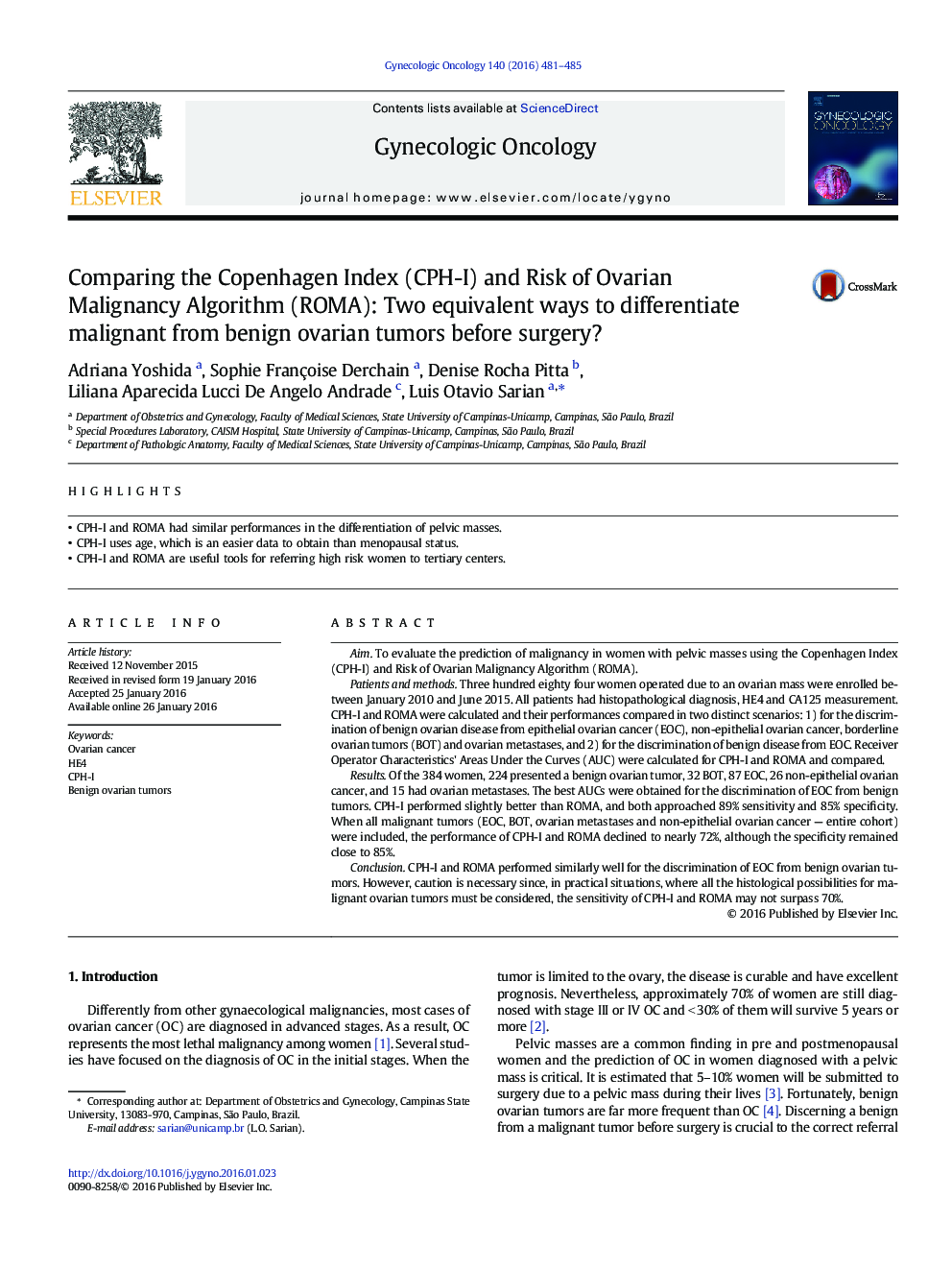| کد مقاله | کد نشریه | سال انتشار | مقاله انگلیسی | نسخه تمام متن |
|---|---|---|---|---|
| 3942982 | 1600074 | 2016 | 5 صفحه PDF | دانلود رایگان |

• CPH-I and ROMA had similar performances in the differentiation of pelvic masses.
• CPH-I uses age, which is an easier data to obtain than menopausal status.
• CPH-I and ROMA are useful tools for referring high risk women to tertiary centers.
AimTo evaluate the prediction of malignancy in women with pelvic masses using the Copenhagen Index (CPH-I) and Risk of Ovarian Malignancy Algorithm (ROMA).Patients and methodsThree hundred eighty four women operated due to an ovarian mass were enrolled between January 2010 and June 2015. All patients had histopathological diagnosis, HE4 and CA125 measurement. CPH-I and ROMA were calculated and their performances compared in two distinct scenarios: 1) for the discrimination of benign ovarian disease from epithelial ovarian cancer (EOC), non-epithelial ovarian cancer, borderline ovarian tumors (BOT) and ovarian metastases, and 2) for the discrimination of benign disease from EOC. Receiver Operator Characteristics' Areas Under the Curves (AUC) were calculated for CPH-I and ROMA and compared.ResultsOf the 384 women, 224 presented a benign ovarian tumor, 32 BOT, 87 EOC, 26 non-epithelial ovarian cancer, and 15 had ovarian metastases. The best AUCs were obtained for the discrimination of EOC from benign tumors. CPH-I performed slightly better than ROMA, and both approached 89% sensitivity and 85% specificity. When all malignant tumors (EOC, BOT, ovarian metastases and non-epithelial ovarian cancer — entire cohort) were included, the performance of CPH-I and ROMA declined to nearly 72%, although the specificity remained close to 85%.ConclusionCPH-I and ROMA performed similarly well for the discrimination of EOC from benign ovarian tumors. However, caution is necessary since, in practical situations, where all the histological possibilities for malignant ovarian tumors must be considered, the sensitivity of CPH-I and ROMA may not surpass 70%.
Journal: Gynecologic Oncology - Volume 140, Issue 3, March 2016, Pages 481–485